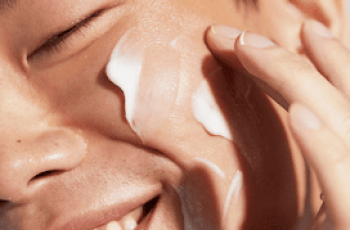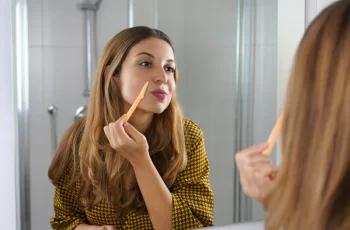
What Is Skin pH? How to Tell if Yours Is Healthy, and Why It Matters
Many products claim to balance the pH of your skin. Here’s a primer on what they do and whether they’re worth the hype.
If you’ve spent any time browsing skin-care products in the past few years, whether online or in the store, you’ve likely seen a lot of claims about how a wide variety of these products can help your skin’s pH balance.
From dermatologists’ offices to the aisles of Sephora, the market is now filled with pH-focused products: cleansers, toners, moisturizers, pH strips, and even high-tech wearable pH sensors.
But what exactly is pH — and why does its “balance” matter to you and your skin?
While aestheticians, dermatologists, and wellness gurus often have divergent points of view on the skin pH buzz, all seem to agree that pH levels are important to overall skin health. But beyond that, it can be hard to navigate the many different claims about pH-based skin-care products and separate fact from fantasy.
Here’s a closer look at the science, the competing claims, and some guidance on if and when pH skin products might be right for you. Your skin will thank you.
What Is pH, Anyway? A Quick Science Lesson for Beginners
For some pH skin basics, let’s go back to high school science class for a moment. The pH is a numeric scale that indicates how acidic or alkaline something is. On the pH scale of 1 to 14, 7 is neutral, below 7 is acidic, and above 7 is alkaline. What does that have to do with your skin?
“The pH of your skin is normal at 4.7,” says Anthony Youn, MD, a plastic surgeon based in Troy, Michigan. “The thought is that if you alter that pH, you’re altering how healthy the skin is.”
Beauty insiders also talk about how pH can affect what’s called the “acid mantle,” a thin barrier on the surface of your skin that helps maintain a slight pH skin acidity. Dr. Youn explains that if you disturb your acid mantle by using overly harsh products, you’re going to suffer the consequences, and they won’t be pretty.
While it has recently re-entered the lexicon, the term “acid mantle” actually dates to 1928, when it was coined during one of the earliest studies on skin surface pH, according to a review article.
The Rise of pH in Skin-Care Products
“Your acid mantle is made up of amino and lactic acids, plus sebum, also known as fatty free acids,” says Tiffany Masterson, the founder of the Houston-based skin-care line Drunk Elephant, which ensures its products are pH balanced. Self-trained on the subject of skin pH, Masterson has become a leading voice on the topic largely through the success of her brand.
“The acid mantle just so happens to protect skin from environmental factors that lead to aging and all-around irritation,” she says. The brand’s Slaai Makeup-Melting Butter Cleanser has been popular with beauty insiders for its pH-balancing powers.
Other products, like TULA Life’s Pro-Glycolic 10% Resurfacing Toner, were so popular when they launched that they were frequently sold out.
The skin pH awareness has even gone high-tech: La Roche-Posay (part of the L’Oréal Groupe) launched My Skin Track, a wearable sensor that detects trace amounts of sweat from your pores and promises an accurate skin pH reading in just 15 minutes. (The product won an innovation award when it debuted at the 2019 Consumer Electronics Show.)
Some credit the rise of pH-focused skin care in the West to the success of South Korean skin-care worldwide. “Many people living in Korea identify with a sensitive skin type, and some of the redness and irritation is attributed to the high pollution levels in Korea,” says Charlotte Cho, a cofounder of the K-Beauty website Soko Glam. “As a result, Korean beauty brands often formulate products with low pH.”
Bestselling K-Beauty brands like Corsx and Acwell often list the pH of each product on the labels.
But some medical experts question the extent to which this focus on pH-balanced products matters to the average consumer. “The reason why we don’t put too much thought into it is because the skin-care scientists have already done that,” says New York City–based dermatologist Cheryl Karcher, MD. “They’re very smart people, these PhDs making these skin-care products. They know that you have to have something close to the pH of the skin or else it’s not going to be cosmetically appealing — it’s going to burn.”
The skin’s barrier is slightly acidic for a reason: to keep moisture in and bacteria out, Dr. Karcher says. “If your pH balance is off and it’s too alkaline, your skin is going to look flaky and red. If it’s too acidic, you’ll increase your chances of inflammatory skin conditions like eczema and acne.”
Masterson believes that common ingredients in products cause many of our skin troubles. Those ingredients include fragrances, essential oils, drying alcohols, and harsh cleansing agents such as sodium lauryl sulfate, which can cause inflammation and disrupt the acid mantle.
“No product can make a difference in the health of your skin barrier if you’re using another product that is actively causing it harm,” says Masterson. “Your body doesn’t work that way. You can’t smoke a cigarette and then eat some broccoli and hope they cancel each other out. So why would your skin be any different? This is why we are adamant about both the importance of pH balanced formulas as well as avoiding the categories of ingredients that can cause the acid mantle harm.”
Why pH-Balancing Products Might Matter Less if You Have Healthy Skin
As much as the skin’s pH balance and acid mantle matter, there is no one-size-fits-all solution. Much depends on the natural state of your skin. Karcher explains that healthy skin is about more than pH alone. “pH is the flavor of the month, but it has to be part of a bigger picture,” she says. “Yes, you need to have an acidic pH to have healthy skin, but if your skin is healthy and you use an alkaline cleanser, your skin is going to revert back in just a few minutes.”
Karcher believes that pH is one of many components that keep skin healthy, but it’s not the only one, nor is it necessarily the primary one. “There are so many factors that contribute to overall healthy skin that if you focus just on pH you’re going to miss so many others that are just as important, or, in fact, more important than pH,” she says.
Cho agrees, but notes that by keeping your skin pH at an ideal level with the right products, you may get ahead of some common complaints. “The pH of your cleansers matters because something that is high pH, 9 and above, can be too drying and stripping for your skin,” says Cho. “When your acid mantle and skin barrier are compromised, it can lead to bacteria, which causes acne and dehydration, which leads to wrinkles. And when the pH of your skin is normal, it should look smooth and hydrated.”
How a Growing Understanding of Gut Bacteria Has Fueled Interest in Skin pH Imbalance
A plastic surgeon specializing in holistic beauty, Youn believes that one reason pH balance has become so trendy in skin care may be the growing research about the microbiome, which protects us against germs, breaks down food to release energy, and may affect the skin.
“There’s something now called the gut-skin axis, where we’re finding that the health of the gut also impacts the trillions of bacteria that live on our skin, and when your pH is imbalanced, it may affect that,” says Youn, citing a research review.
Youn says that while many in the holistic beauty world have become obsessed with pH, the acid mantle, and the microbiome, it’s not the case in the medical world just yet. “The real question is just how much impact does the pH of a skin-care product have on the skin, and for how long? I don’t think we know,” he says. “If you ask 10 plastic surgeons who are recommending skin-care products about the pH of the skin and the acid mantle, they probably would have no idea what you’re talking about.”
Sometimes research follows marketing, Youn adds. “It remains to be seen what role pH balance plays in disturbing the microbiome, but if it affects bacteria on the skin, that might explain the origins of inflammatory disease skin problems like eczema, rosacea, and acne — which have no known cause in science as of now.”
Trevor Cates, ND, a Park City, Utah–based naturopath who has addressed the American Academy of Antiaging Medicine about the skin’s barrier function, says the foods we eat can play a part. “Eating a lot of sugar or dairy products can increase sebum production,” says Cates. “Those things can impact the acid mantle from the inside-out. But also, what we put on the skin can impact that. And the first thing that people do is use a cleanser, so it’s important that it has a mild acidity.”
The Best Way to Find Out if Your Skin-Care Products Have a Low pH
It may be that you don’t need to worry too much about the pH of your products if you have healthy skin. But if you already suffer from inflammatory skin conditions, such as acne or eczema, you’ll want to stick to cleansers, serums, and moisturizers that range from 4.6 to 5.5 to avoid stripping the skin, says Cates.
Because many skin-care products in the United States don’t list the formula’s pH on the label, you can find out what the pH of a product is by checking the brand’s website, or call the company and ask. If you want to be sure, you can also purchase pH strips and test a product yourself. “If you live in a location where the tap water is hard, that can cause your skin’s pH balance to become more alkaline,” Cates says. (If you see white spots on your glassware, or calcification on your showerheads, you likely have hard tap water, according to Sciencing.) One solution is to try cleansing with micellar water, which French women have been hailing as the secret to great skin for decades, per an article in Vogue.
On the nutrition front, one review cited research that suggested diet may have a bigger connection to skin health than many dermatologists have believed to date. On the basis of existing data, a plant-based diet that’s low in refined carbohydrates is a good idea for overall skin health, the review’s authors concluded.
And when all else fails, sometimes it’s best to remember that less is more.
“There’s something I call the ‘hospital phenomenon,’” says Masterson. “When I was delivering my babies, I was in the hospital for several days each time and then at home in bed recovering. I really didn’t pay much attention to my skin then, and guess what? My skin was never happier. It’s because I allowed it to function on its own and left the acid mantle alone to do its job, which it did very well. If you struggle with skin issues and you don’t know what else to do, the answer is almost always: ‘Do less.’”


